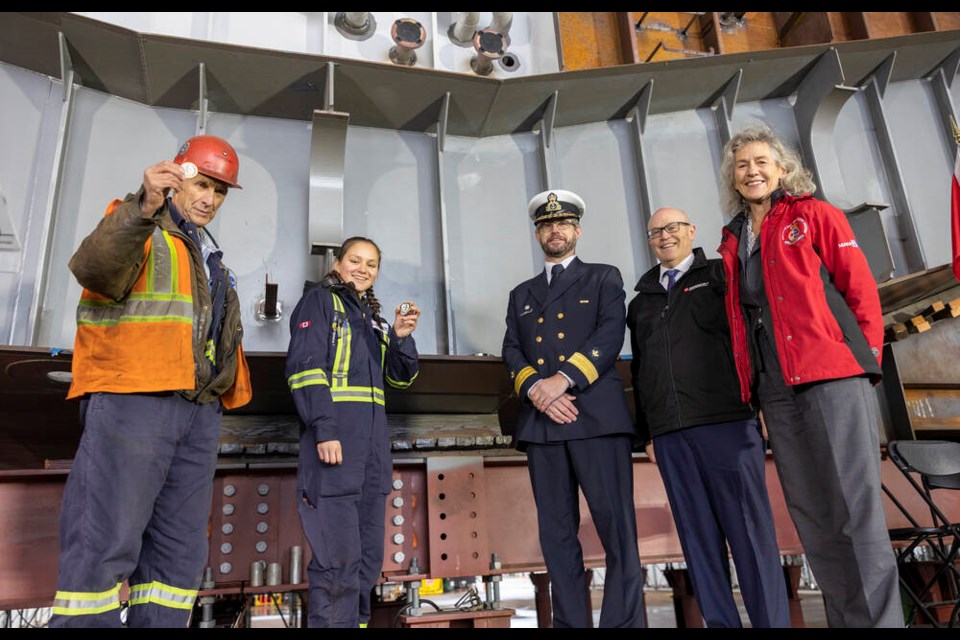NORTH VANCOUVER — Seaspan’s Vancouver Shipyards celebrated a milestone on construction of another federal government vessel Friday, as Joyce Murray, minister of Fisheries, Oceans and the Canadian Coast Guard, joined workers for a keel laying ceremony at the North Vancouver shipyard.
Two workers – the longest-serving employee and the newest – helped place coins near the keel of the offshore oceanographic science vessel currently under construction at the shipyard, in a tradition meant to bring both the shipyard and the ship good luck.
The oceanographic vessel is the fourth Coast Guard ship to be built at the North Vancouver shipyard under the federal government’s national shipbuilding strategy, and is being constructed at the same time as Seaspan is building the Navy’s massive joint support ships.
When completed, the 88-metre-long offshore science vessel – equipped with a several floating labs – will allow up to 34 crew and 26 scientists to collect oceanographic, fisheries and hydrographic information.
That’s critical for supporting Canada’s work on climate change, said Murray. The vessel will also be capable of search and rescue missions and oil spill response.
The vessel, scheduled for completion in 2025, will replace the Coast Guard vessel Hudson, a 60-year-old ship as old as the Coast Guard itself, which was decommissioned earlier this year.
Murray acknowledged there have been some gaps between older federal ships reaching the end of their lives and newer ships being completed.
But she added part of the goal of the government’s national shipbuilding strategy has been to restart the industry to become capable of building large and complex ships again.
Now that’s happening, said Murray. “I would call it a success story.”
That message was repeated by Denis Stevens, Seaspan’s vice-president of government relations, in remarks before hundreds of trades workers Friday.
“Seaspan has played a major role in rebuilding the marine industry here in Canada. We’ve built the expertise, the capabilities in the Canadian supply chain to design and build large, complex and multi mission ships, like the offshore oceanographic science vessel,” said Stevens. “The bottom line is the (national shipbuilding strategy) is working at Seaspan shipyards, and it’s a major driver for economic growth for B.C.”
Construction of the Navy’s huge joint support ships is also currently underway at the shipyard. Over 75 per cent of the blocks for the first ship, with will have a length of 174 metres, are now complete. This summer, one of the major 105-tonne blocks, which will serve as the ship’s control centre at sea, was put in place and a huge stern was joined to the middle section of the ship.
Although the shipyard is currently busy with building federal ships, CEO John McCarthy said Seaspan is also “very interested” in the possibility of bidding on four new hybrid diesel-electric Island-class ferries that B.C. Ferries issued a request for pre-qualifications on from shipyards this week. McCarthy said it’s possible the shipyard could take on the work after completion of the second joint support ship but before starting on an icebreaker for the federal government.





